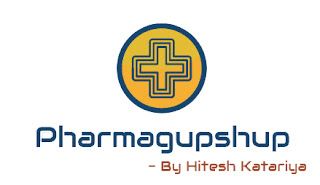The market shift toward advanced drug delivery formulations reflects both a strong societal desire to improve therapeutic efficacy and the economic pressures confronting the pharmaceutical industry. Medical professionals continually seek better therapies and increasingly seek earlier detection capabilities. Patients desire effective, inexpensive treatments that minimize harmful side effects. Employers seek to reduce illnesses and treatment costs that decrease employee productivity, increase health insurance costs, and often increase staffing needs. Faced with numerous upcoming expiration of patents covering blockbuster drugs, pharmaceutical companies now view advanced drug delivery technologies as a method to maintain patent protection of highly profitable drugs. By altering the therapeutic profile of existing drugs by combining the drugs with new advanced delivery technologies, the pharmaceutical companies can obtain new patents to extend the exclusivity of blockbuster drugs.Companies can transform generic drugs into patentable pharmaceutics by reformulating generic drugs with advanced delivery technologies. This practice is known as ‘branded generics’ and has become a very profitable business. During the past decade, advanced drug delivery research and development activity has surged because of the aforementioned medical and economic driving forces.
History of colloidal delivery carriers of lipophilic drugs
In 1950 Scientist introduced oil-in-water emulsions for parental nutrition were the first commercial colloidal delivery carriers of lipophilic drugs containing diazepam and etomidate. But the addition of the drug often destabilizes the emulsion. Emulsions exhibit drug burst release phenomena due to emulsion destabilization upon administration, the liquid state of the carrier offering little mass transfer resistance, and the inability to stabilize the drug in the oil phase.so additional research require for colloidal delivery carriers of lipophilic drugs.
In 1960 Scientist introduced liposomes as the second generation of colloidal drug delivery technology. Liposomes are spherical phospholipid bilayer structures with an encapsulated aqueous core. Advantages to using liposomes is to prevent RES uptake, the addition of surface ligands permits tissue targeting, use of biological phospholipids provides inherent biocompatibility. Liposome based drug carriers were commercialized in the 1980’s as topical anti-aging products and later in the early 1990’s as pulmonary delivery and intravenous delivery technologies. Liposomal drug delivery cannot successful drug delivery system due to several shortcomings like Chemical and physical stability of liposomes for parenteral delivery, providing low lipophilic drug loading capacity, kinetics and production costs make liposomes more expensive than other drug delivery systems.
In 1980 Scientist introduced microemulsions which are single phase optically isotropic and thermodynamically stable liquid solutions comprised of water, oil, and an amphiphile. Various advantages of microemulsions are thermodynamically stable, not require significant energy input to form, low production cost, spherical with narrow size distributions, most often 50 – 250 nm in diameter. But problem is not solved here, it exhibit the same deficiencies as emulsion systems like burst release and destabilization occur upon administration, To achieve controlled drug release, it has been estimated that the drug must be very lipophilic, having at least a 106:1 octanol-to-water partition coefficient. For these reasons, no parenteral Microemulsions formulation has been commercialized to date.
In 1990 Scientist introduced polymeric nanoparticles colloidal delivery carriers of lipophilic drugs. Polymer carriers offer significant control over the drug release kinetics, polymer system is to provide chemical modifications, including the synthesis of block and co-polymers but disadvantages are polymers on the nanoparticle scale are highly cytotoxic because of polymer degradation upon endocytosis and the lack of an efficient large-scale production method. Drug Nano suspensions is also recent approach but this approach has suffered from solubilization, recrystallization of the drug particulates and also lead to drug particulate aggregation and particulate size growth. Thus additional research requires in nanoparticles for overcoming disadvantages of polymeric nanoparticles so in 1990, Scientist introduced lipidic nanoparticles.
There are two types of lipidic nanoparticle which are Solid Lipid Nanoparticles and Nanostructured lipid carriers. Firstly Scientist introduced solid lipid nanoparticles. SLNs combine advantages such as physical stability, protection of incorporated labile drugs, controlled release and excellent tolerability of other innovative carrier system (fat emulsion, liposomes and polymeric nanoparticles) while at the same time minimizing the associated problem. For high drug loading and entrapment efficiency, lipophilic drug with good compatibility with lipids, have often been selected to incorporate in to SLNp but we know every delivery system has advantage and disadvantages.so SLNp have disadvantages like Particle aggregation, Dosing problems (e.g. dispersion for soft gelatin capsules, lipid particle content max. 30%), Physical stability of aqueous solution.
Nanostructure lipid carriers (NLC) are the new generation of lipid nanoparticles, attracting major attention as novel colloidal drug carriers. They are developed to overcome the limitations associated with the SLNp. SLNp consist of solid lipids, while NLC consist of a mixture of specially blended solid lipid (long chain) with liquid lipid (short chain) resulting matrix of the lipid particle shows a melting point depression compared to the original solid lipid, however the matrix remains solid at body temperature. Compared to SLNp, NLC have a higher drug-loading capacity for a number of active compounds, and avoid or minimize potential expulsion of active compounds during storage.


0 comments:
Post a Comment